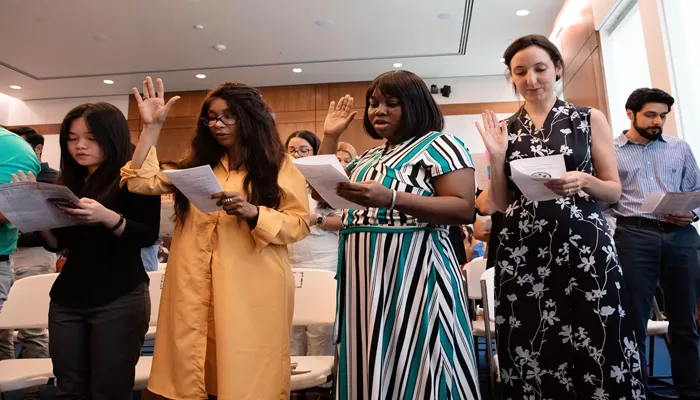JD Vance Defends Controversial Immigration Views Using “Gangs of New York.
JD Vance, the Republican vice-presidential nominee, has defended his past statements linking immigration to increased crime by referencing the film “Gangs of New York.” During a campaign event with the Milwaukee Police Association, Vance addressed comments from a 2021 interview with far-right podcaster Jack Murphy, in which he suggested that earlier waves of Italian, Irish, and German immigrants led to higher crime rates and ethnic conflicts.
When asked about his current stance on mass deportations, which he and former President Donald Trump have made central to their platform, Vance did not provide a direct answer. Instead, he reiterated his views on crime and ethnic conflict, citing Martin Scorsese’s film, which portrays gang violence between Irish immigrants and native Protestants.
Vance argued that large ethnic enclaves could lead to higher crime rates. “Well, first of all, I also said there were a lot of benefits to that wave of immigration, but has anybody ever seen the movie ‘Gangs of New York’? That’s what I’m talking about,” he stated. He added, “Massive amounts of illegal immigration actually start to create ethnic conflict and higher crime rates.”
In response to a request for evidence supporting these claims, a campaign spokeswoman referred to a report from an anti-immigration think tank, which argues that crimes committed by immigrants are often underreported, and pointed to a rise in violence in Minnesota attributed to gang rivalries among East African communities.
Historians and criminologists have challenged Vance’s assertions. Research consistently shows that immigrants are less likely to commit crimes than native-born citizens. A 2023 study by Stanford, Princeton, and other institutions found that immigrants have not been more likely to be imprisoned than those born in the U.S. Additionally, crime rates have generally decreased as immigration has increased in recent years.
Tyler Anbinder, a historian and adviser for “Gangs of New York,” noted that immigrants during the film’s era and beyond have not committed crimes at higher rates than the native population. “Immigrants are so happy to be in America,” Anbinder said, explaining that one reason immigrants commit fewer crimes is their desire to avoid deportation.
Alex R. Piquero, a criminology professor at the University of Miami, criticized Vance’s concerns about “ethnic enclaves.” He argued that such neighborhoods, where immigrants cluster for support and security, do not increase crime rates but instead offer protection from crime.
Vance also called for a return to early 20th-century immigration policies, arguing that a controlled immigration system would promote assimilation and a common American culture. He suggested that increased deportations would benefit the country.
Historians argue that Vance’s views reflect long-standing nativist rhetoric that has historically labeled certain immigrant groups as criminally predisposed. These negative stereotypes, which have shifted from Europeans to Latinos and Mexicans, have historically fueled prejudice and led to harsher treatment of immigrants by authorities and the media.
Anbinder pointed out that in “Gangs of New York,” the most violent character is a nativist who despises immigrants. Vance’s association of Irish immigrants with violence mirrors historic attempts to blame immigrants for crime, Anbinder noted. “What Vance is doing is not much different now,” he said.


